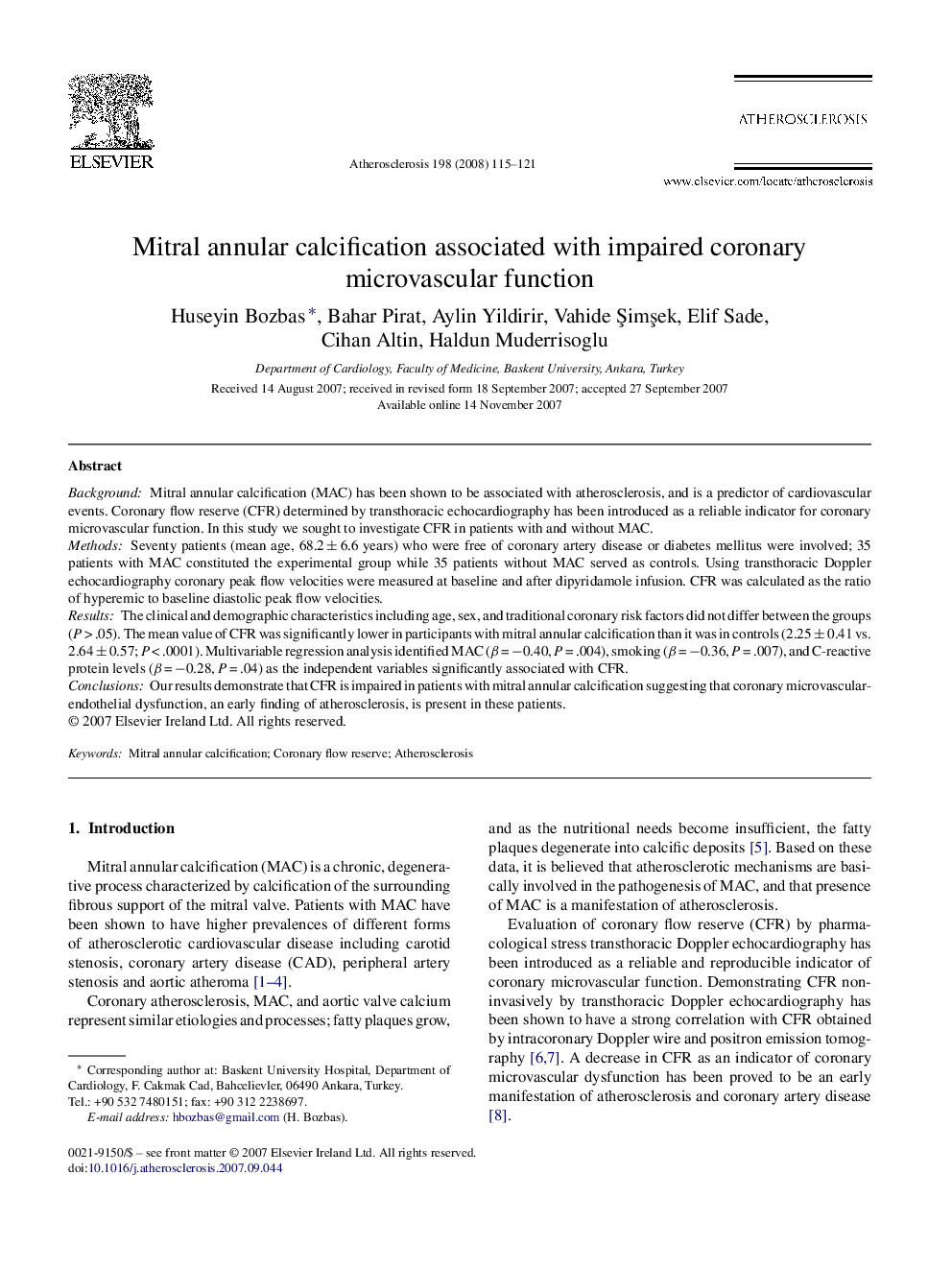| Article ID | Journal | Published Year | Pages | File Type |
|---|---|---|---|---|
| 2894610 | Atherosclerosis | 2008 | 7 Pages |
BackgroundMitral annular calcification (MAC) has been shown to be associated with atherosclerosis, and is a predictor of cardiovascular events. Coronary flow reserve (CFR) determined by transthoracic echocardiography has been introduced as a reliable indicator for coronary microvascular function. In this study we sought to investigate CFR in patients with and without MAC.MethodsSeventy patients (mean age, 68.2 ± 6.6 years) who were free of coronary artery disease or diabetes mellitus were involved; 35 patients with MAC constituted the experimental group while 35 patients without MAC served as controls. Using transthoracic Doppler echocardiography coronary peak flow velocities were measured at baseline and after dipyridamole infusion. CFR was calculated as the ratio of hyperemic to baseline diastolic peak flow velocities.ResultsThe clinical and demographic characteristics including age, sex, and traditional coronary risk factors did not differ between the groups (P > .05). The mean value of CFR was significantly lower in participants with mitral annular calcification than it was in controls (2.25 ± 0.41 vs. 2.64 ± 0.57; P < .0001). Multivariable regression analysis identified MAC (β = −0.40, P = .004), smoking (β = −0.36, P = .007), and C-reactive protein levels (β = −0.28, P = .04) as the independent variables significantly associated with CFR.ConclusionsOur results demonstrate that CFR is impaired in patients with mitral annular calcification suggesting that coronary microvascular-endothelial dysfunction, an early finding of atherosclerosis, is present in these patients.
